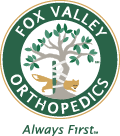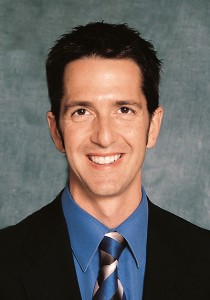Message from your doctor…
Whether you or one of your family members or friends is considering knee arthroscopy, or are scheduled for the procedure, I understand this can be a stressful time. And you may have forgotten some of the information we discussed during our last visit, or forgot to ask me a specific question about what to expect. This site is designed to help us stay connected, and to answer some of the most common questions patients ask me about knee arthroscopy.
If you’re scheduled for this procedure, please sign up to the right to receive pertinent post surgical and recovery information from me via text message or email. I want to make sure that both you and your family members have timely information at your fingertips during the days, weeks, and months following your surgery…so you can get back to enjoying the activities you love.
RecoverWell — Post Surgical Knee Arthroscopy
Pertinent Recovery Information
Knee Arthroscopy – Post-Operative Instruction
Partial Meniscectomy – trimming of cartilage shock absorber
Chondroplasty – trimming of articular cartilage that coats the bones
Day After Surgery
You will be receiving a post-operative phone call from the surgical staff within a few days after surgery to check on you and assist you with any concerns.
When To Call
Please call our office at (630) 584-1400 if you develop a fever greater than 101°F, increasing pain that is not responding to pain medication, redness, increased swelling, persistent bleeding or drainage, or drainage other than clear fluid or blood. If it is after hours, the answering service will contact the physician assistant on call.
Pain Medication
PAIN MEDICATION: Your prescription for pain medication will be called into the pharmacy of your choice before you leave the surgery center. After the first day or two, as the pain lessens, you may decrease the frequency with which you take the medication. Remember, the medications are not necessarily meant to completely eliminate your pain, only to make it more bearable. Narcotic pain medications can cause constipation; you may wish to use an over-the-counter stool softener to help prevent this.
Minimal Pain
If you are having minimal pain and would like to switch to a milder medication, please take Tylenol/acetaminophen (extra strength or regular). Do not take Tylenol and norco together (this would be too much acetaminophen). Do not exceed more than 4000mg of Tylenol/acetaminophen in a 24 hour period. If you are taking an aspirin per day (for blood clot prevention), you should be cautious combining aspirin with anti-inflammatories (NSAID) such as Advil, Aleve, or Ibuprofen. These medications together can increase risk of GI bleeding. Please contact your medical doctor with questions about taking aspirin together with NSAIDs.
Ice
It is helpful to use ice to decrease pain and swelling. For the first few days after surgery, please try to ice at least 5 times daily, for 20 min each time. You may also elevate your leg on a few pillows while laying down to decrease pain and swelling
Dressing
You will have a soft dressing and ace wrap applied over your incisions. It is meant to absorb any leaking blood or fluid from the joint, and to protect from infection. Leakage immediately after surgery is normal and actually helps to drain some of the fluid that accumulates in the joint during surgery. The dressings may become slightly moist or blood-stained; this is normal and usually not a cause for alarm.
Weight Bearing
You may put full weight on your operative leg immediately after surgery. Some patients will be given crutches to use for comfort, but they are not required. Wean off the crutches whenever you are comfortable walking without them.
Bathing/Dressing Change
You may remove your dressing 48 hours after your surgery to take a shower. You may have steri-strips over your incisions (small white strips of tape). If so, leave them in place until they fall off on their own or until they are removed at your first post-op appointment. You may let soap and water gently wash over your incisions, but do not scrub them. Pat them dry with a towel, then you may leave the steri strips uncovered if you’d like. Or, you may recover each of the steri strips with band-aids if there is still any drainage. You may not soak in a bathtub or go swimming until your incisions are healed (usually 2-4 weeks).
Driving
Please do not attempt driving until you are off the pain medications. You should wait to drive until you can comfortably and safely operate the vehicle (get from gas to brake).
Prevention Of Blood Clots
Although the risk is very low, there is a small chance of developing blood clots into the leg after a surgery. A blood clot in the leg is called a DVT or deep vein thrombosis. Most patients will be asked to take a 325mg aspirin daily for 1 month after surgery to prevent clots. Some patients at higher risk of blood clots will require another form of anticoagulation such as lovenox injections or coumadin. Those at higher risk include patients who have had prior DVT, are on birth control pills, patients who smoke, or have clotting disorders.
Return To Work
This will vary, based on the nature of your job. If you have a desk job, you may return to work as soon as you are off the pain medication, comfortable driving, and feel that you may perform your job. For example, if your surgery is on a Friday, you could likely return to a desk job by Monday. If you have a more labor-intense job that may require more walking, squatting or heavy lifting, you may need at least 2-4 weeks off work. We can discuss this in more detail during your 1st post-operative visit and we can give you work status notes (including light duty if this is an option for your job).
Physical Therapy
You will start physical therapy within 1 week of surgery. Most patients will go 2-3 times/week for about 3 weeks. It is common to start physical therapy prior to your first post-operative visit.
Sport Specific Guidelines
We know you are eager to return to your sports and hobbies. We want to guide you safely through that process. Please use the following as a guide to slowly resume normal workouts.
GOLF
You may golf 1-2 weeks post op. Please avoid excessive pivoting/twisting of the knee for a few weeks
WEIGHT LIFTING
Please follow the instructions of your physical therapist. During physical therapy, your therapist can create a safe “return-to-lifting” program. You may do upper body weight lifting and core exercises 3 days after surgery.
SWIMMING
You may get in a pool at 2 weeks post-op, as long as your incisions are well healed. You should wait to swim until you have no swelling to the knee and full motion before you start swimming. Start with a gentle flutter kick then progress as tolerated.
OTHER SPORTS
Once you have full and comfortable motion and your physical therapist feels that your strength has progressed well, you may resume sports without restrictions. Individual progress varies but it is usually 2 to 6 weeks after surgery before a complete return to team sports such as baseball, football and soccer. Please ask us about returning sooner if you’d like.
Learn more about Knee Arthroscopy
Recovery Time Points
Day After Surgery
Take the pain medication as prescribed; you may taper off as you feel comfortable after the first few days. To help with pain and swelling, use ice and elevate your leg so that your knee is above the level of the heart. You will begin physical therapy about 3 days after surgery.
7-10 days post-op
You will have your first office visit. You will review surgical pictures and be given the opportunity to ask questions. Limit kneeling and squatting if possible while your knee heals.
3-4 weeks post-op
You will most likely have finished physical therapy by now.
4-6 weeks post-op
If things have progressed as expected, you will likely be able to resume all activities as tolerated and this may be your last post-operative office visit.
Frequently Asked Questions
When can I drive?
Once you feel comfortable and able to safely operate a vehicle, you may resume driving. You must be off the narcotic pain medication to drive.
When can I resume normal workouts?
You may do light jogging at 2-3 weeks post op, but start on an even-surface/treadmill to make sure your knee feels comfortable. You may swim 2-3 weeks post op. Make sure the incisions are healing well. You may golf 1-2 weeks post-operative. Please avoid excessive pivoting/twisting of the knee for a few weeks.
For most contact sports, you may resume play 2-4 weeks after surgery. We can discuss any of your sports and exercise in more detail at your first post-operative visit. Slight increased swelling to the knee after exercise can be normal. Please be sure to ice after you exercise.
When can I go back to work?
This will vary, based on the nature of your job. If you have a desk job, you may return to work as soon as you are off the pain medication, comfortable driving, and feel that you may perform your job. For example, if your surgery is on a Friday, you could likely return to a desk job by Monday. If you have a more labor-intense job that may require more walking, squatting or heavy lifting, you may need at least 2-4 weeks off work. We can discuss this in more detail during your 1st post-operative visit and we can give you work status notes (including light duty if this is an option for your job).
Do I need to go to physical therapy?
Most patients benefit from therapy 2-3 times/week for up to 3 weeks. If you are making great progress in therapy, you may not need the full 3 weeks. Your physical therapist will help determine the optimal amount of therapy that is best for you. If you have undergone a prior, similar knee arthroscopy, you may not need to go to physical therapy if you are comfortable with resuming motion and strength on your own.

